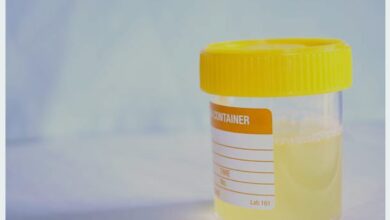CHRONIC ITCH (PRURITIS)

Some of the most miserable times in my life have been the all-too-frequent occasions when I had poison ivy. The seventy-two years we lived in Indiana were occasioned by numerous episodes of this miserable condition because we lived in an area of the country that had lush, green vegetation that thrived in the rainy, hot, humid summers. My job for the 27 years we lived on a 1.25 acre lot bordered by a ravine and a fence row of small trees and “sticker bushes” was to keep the area weeded and trimmed. I did that task, but camouflaged among those bushes and trees were numerous poison Ivy vines that I invariably failed to identify. Thus, nearly every summer I had poison ivy. If you’ve ever had it you know how miserable the itching can be.
Fortunately, the itching from poison ivy is classified as an acute itch because treated or untreated, poison ivy (PI) lasts less than 6 weeks. About now, somebody is going to say, “I had poison ivy that lasted two months!” Well, maybe you did, but you must have been re-exposed because a primary case of poison ivy lasts four weeks, max. That’s the nature of the brute.
The itch of poison ivy is intense and cannot be relieved by scratching. Unlike a mosquito bite which eventually stops itching when you scratch it, the itch from PI worsens and increases the more you scratch it. The point of all this is to recognize there are things like PI that cause short-term itching (less than 6 weeks), and unfortunately, there are also conditions that cause chronic itching (lasts longer than 6 weeks). These chronic conditions are the focus of this blog post.
Itching is also called pruritus. Everything in medicine has a colloquial name, and to make it complicated for the general population, also has an erudite, technical name. For itching it is pruritus. In 1660, Samuel Hafenreffer stated that “Itching is an unpleasant sensation which provokes the desire to scratch.” How appropriate and straightforward. It’s also “considered a protective sensation and [a] response to the environment.” It is estimated that between 15%-22% of the US population has chronic pruritus and thus have significantly impaired quality of life. Impaired sleep, short attention span, and irritable behavior are a few of the lifestyle issues with itching. Pruritus occurs equally between the sexes, but women are better than men at tolerating a chronic itch. Women always “suffer in silence,” while men love the attention gained from being miserable.
There is no method known to measure the itching sensation. It is a purely subjective complaint so an itch that may drive one person nuts might not be so bad to another.
I won’t go into an explanation of the actual mechanism of chronic pruritus because it’s too complicated, but in most cases, chronic itching is from neurogenic or neuropathic origins. The human body uses the same nerve pathways to experience both itching and pain, and an itch occurs when something happens that causes irritation or dysfunction of the nerves of the skin. In the skin are nerve fibers called pruritoceptors thought to be the origin of the itch sensation. An itch can develop from surface nerves or in a nerve anywhere along its path from the skin to the brain. That makes treatment difficult because the origin of the itch is hard to pinpoint. Most itches are pruritoceptive.
Chronic pruritus can occur from several causes. They are:
Inflammatory Causes: atopic dermatitis (eczema), psoriasis, seborrheic dermatitis, tinea
Corporis (ringworm), pediculosis (lice, scabies).
Neuropathic Causes: Neurogenic—cause is unknown, there is no apparent nerve damage
Neuropathic—nerves are damaged(post-herpetic neuralgia, small-fiber neuropathy)
Systemic Disease Causes: Uremia—chronic kidney disease, renal failure. Jaundice—
chronic liver disease, cirrhosis. Hematologic malignancy—leukemia, lymphoma.
60% of cases of chronic pruritus are INFLAMMATORY
25% of cases of chronic pruritus are NEUROPATHIC
15% of cases of chronic pruritus are due to SYSTEMIC DISEASE
Other uncategorized cases are Pruritoceptive itch due to activation of sensory fibers in the skin
and
Psychogenic itch which is psychosomatic or psychiatric.
Neither of these types have definitive, identifiable causes. Psychogenic itching is probably more common than we realize. People experience it during times of stress and anxiety. For many others it is an expression of the way patients feel at times of stress. Itching is an expression of our inner, subconscious struggles to cope. We aren’t always successful.
Many drugs, oral and topical are available for the treatment of chronic pruritus. They work sometimes. Sometimes not. The cause of the pruritus has a big influence on what drug is chosen.
Topical corticosteroids, anti-eczema drugs, and tacrolimus all work to a degree.
Oral gabapentin, pregabalin, amitriptyline, doxepin, naltrexone, and butorphenol all are effective, alone or in combination. Monoclonal antibodies and immunosuppressives are last resort drugs which have show some efficacy. Of course in situations where pruritus is the result of a chronic systemic disease, treating the disease often leads to improvement or complete symptom resolution.
The worst itching I’ve had is from poison ivy (PI). It drives you nuts. It’s bad enough for the 3-4 weeks it is active, let alone for more than 6 weeks. Treating it with Depo Medrol, prednisone, or topical steroid will shorten the course by a week. On the other hand, those folks who have chronic pruritus have a greater burden to deal with. They need to be aggressive for their treatment to be effective. Some new treatment may emerge giving doctors another “shot” at controlling the itching. Determining the underlying cause is very important to successful treatment.
References: Butler DC, Berger T, Elmariah S. Chronic Pruritis: A Review. JAMA network.com 2024 May 29.
Cevikbas F, Lerner EA. Physiology and Pathophysiology of Itch Physiology Rev 2020 July 1;100(3):945-982.





I have been browsing online more than three hours today yet I never found any interesting article like yours It is pretty worth enough for me In my view if all website owners and bloggers made good content as you did the internet will be a lot more useful than ever before
Ok